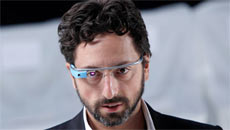Picture this: Robots braving bullets while ferrying weapons and ammunition to soldiers on the battle front. Or, a robotic arm resembling the human variety that can work in hazardous areas like blast furnaces. Students at IIT-Roorkee are swotting to turn these ideas into reality.
At the leafy Indian Institute of Trechnology-Roorkee (IIT-Roorkee campus, a group of PhD students is working on a four-legged robot that would be able to carry weapons to soldiers on the battlefront. And a broken limb would be no deterrent."
"We are working on the operational prototype of a four-legged robot that consists of a chassis and can be used at the forefront of war areas, for instance to carry weapons," P.M. Pathak, associate professor in the mechanical engineering department, told IANS.
"Even if one limb is hit by a bullet, the robot can continue to function on the remaining three limbs, and even of two," explained Divye Anand, a third year student in the robotics department.
Some students are working on a robotic arm that resembles a human arm with flexible finger-like extensions that can be used to pick up, hold or even push objects. The robotic arm can withstand high heat and can be used by people who work in hazardous spaces like blast furnaces.
At the annual IIT-Roorkee TechFest - Cognizance - hundreds of students from various IITs and other engineering colleges across India showcased over 2,000 robotic inventions.
One section, titled Power-Drift, focussed on robotic racing cars. A Formula 1 track was laid out on which miniature battery-run robotic cars whizzed around - as students enthusiastically clapped and cheered.
In another fascinating event, titled Robosapiens, there were robots involved in "hand-to-hand combat" in a boxing ring. The robots, two-feet high with wheels, were equipped with different weapons ranging from a chakra-type wheel, a hammer and even a sword.
The robot that knocked the rival down first was the winner. While some of the robots were controlled manually by remote from outside the ring, others had been pre-programmed to fight.
"Robotics may not be popular in India yet, but the times are changing," Pathak said.
"A lot of research is going on in this field and we have students from the undergraduate level to PhDs who contribute," he added.
He said robotics has developed over the years - from the 1950s and 1960s when the first industrial robots were introduced. They were thought of as mechanical devices used in industries for mass production.
Now they are used in different fields and have become more specialized and understand complex commands - and, in some cases, even logic."
Pathak explained: "Robotics activity is going on mainly in the mechanical department. But since this field of study is inter-disciplinary, we have people from the electrical, computer science and mathematics backgrounds who collaborate for the research."
Explaining how a robot is made, Pathak said the students first design its features and functions on a computer.
"We help students by making them study the structure, and tell them how to control and power the robots," he said.
Until now, robotic activities have been tested in the Indian health sector with surgeries. For instance, the All India Institute of Medical Sciences (AIIMS) has a precision prostate robotic surgeries unit, Pathak said.
Recalling his first year at the IIT-R robotics department, Divye Anand told IANS: "I was thrilled to see robots that could walk, pick and place objects on their own."
"Robots work with precision and can perform tasks faster than humans. They save workers from performing dangerous tasks and working in hazardous conditions and thus save human lives", Pathak added.





